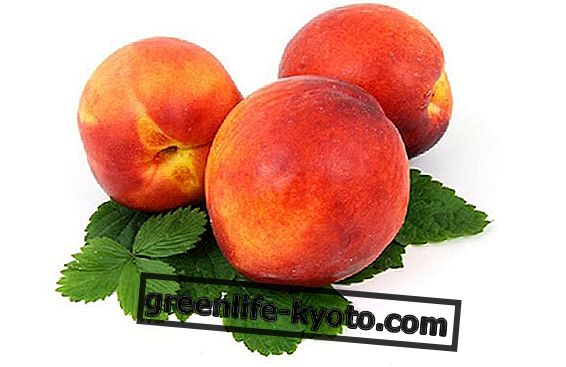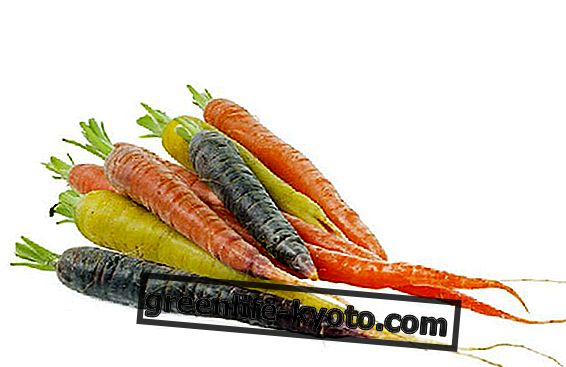
The use of seasoning has different purposes and therefore different origins; already some animals like sheep, horses, but also primates, like to stop and lick the salt from the rocks. Sodium chloride is fundamental for life, and it is not a coincidence, but a result of the fact that the pleasure of tasting a vital element has become a universal behavior.
But there are other reasons behind the act of dressing. One is the preservation of food : many seasonings have a strong antioxidant power, or they help the products to dehydrate completely in order to avoid rot, or they still prevent the engraftment of degradations due to insects, molds and microbes, thanks to the strong terpenes present in spices, or thanks to impermeable fatty layers, or to the acidity of some fermented substances.
Very often, however, essential oils, fats and fermentation products are also good, and here is the search for condiments for the pure sense of taste, in the form of elaborate sauces and, in the most extreme cases, synthetic chemicals such as acidity enhancers, of flavor, etc.
The ingredients of the seasonings
The supply of necessary mineral salts and the important antioxidant, anti-degenerative, anti-microbial, disinfectant, repellent and anti-fungal functions are given by a whole series of ingredients which, in different formulas, occur around the world, according to the possibilities offered by the geography and local taste.
The ingredients of the sauces are generally: salt, sweeteners (sugars, honeys, molasses, syrups ...) aromatic herbs (spice leaves such as mint, basil, oregano, thyme, sage, etc.) tubers and bulbs such as garlic, onion, horseradish, ginger ; seeds (such as sesame, poppy), pepper, nutmeg, peanut butter, oils (such as olives, coconut, peanut, sesame), fermented seeds (such as soy sauce, tamari, vinegars), fish sauce, etc.), sour or dried fruit (citrus peel, myrtle berries, juniper, mango, lemon juice, etc.).
The use of salt in the kitchen
Other seasonings from the world
Let's analyze some condiments from the four corners of the world.
- Mayonnaise (France): it is one of the most consumed condiments in the world, it is a cream made with eggs, oil and lemon juice. Some of its variants, such as tartar sauce (ie with garlic and mustard), also have a fair success.
- Ketchup (England and China): the sweet and slightly sour tomato sauce was invented more or less simultaneously and independently both in England and in China.
- Soy sauce (China): the dark liquid that we find in Chinese restaurants is fermented soy sauce, the best form to take and assimilate soy nutrients. The Japanese version is the tamari.
- Vinegar : of very ancient invention, vinegar is obtained by fermenting fruit juices
- Ajika (Caucasus): it is an interesting spicy but aromatic cream with chillies, garlic, fenugreek and coriander.
- Tkemali (Caucasus): it appears as a dense liquid based on fermented cherries, mint, garlic, salt and coriander.
- Worchestershire sauce (England): is a complex sauce in which vinegar, salt, sugar, molasses, anchovies, garlic, onion and tamarind cream have macerated together.
- Nam Chim (Indochina): here is the Thai name of the fermented fish sauce that we find everywhere from Burma to Vietnam, from China to Malaysia.
- Shichimi (Japan): a powdered mixture of pepperoncino, ginger and roasted orange peel.
- Wasabi (Japan): famous and spicy Japanese horseradish pasta.
- Chimichurri (Argentina): a sort of marinade that the Argentines put on asado (their grilled) made of parsley, vinegar, oil, oregano and garlic.
- Za'atar (Arabia): it is a kind of salt flavored mainly with oregano, savory and Sicilian sumac, to which is added sesame grains.
- Toum (Middle East): a common seasoning based on garlic, lemon and oil.
- Sumbala (various African countries): after having fermented seeds of various species, they are dehydrated and salted before use.
- Satsivi (Russia): a kind of mayonnaise based on a nut cream.
- Mole (Mexico): there are various different sizes, depending on the color, but generally they are based on chilli, tomato and pumpkin seeds.
- Chutney (India): complex fermentation of fruit, chilli, spices and sugar.
- Dijon Mostarda (France): it is a typical mustard based on the juice of unripe green grapes.
- Chrain (Eastern Europe): typical of East European Jews, it is a spicy horseradish cream.
- Pesto (Italy): for years it has been the most sold sauce in the world: basil cream, with salt, oil, garlic and seeds that, depending on the recipe, can be pine nuts or walnuts.













